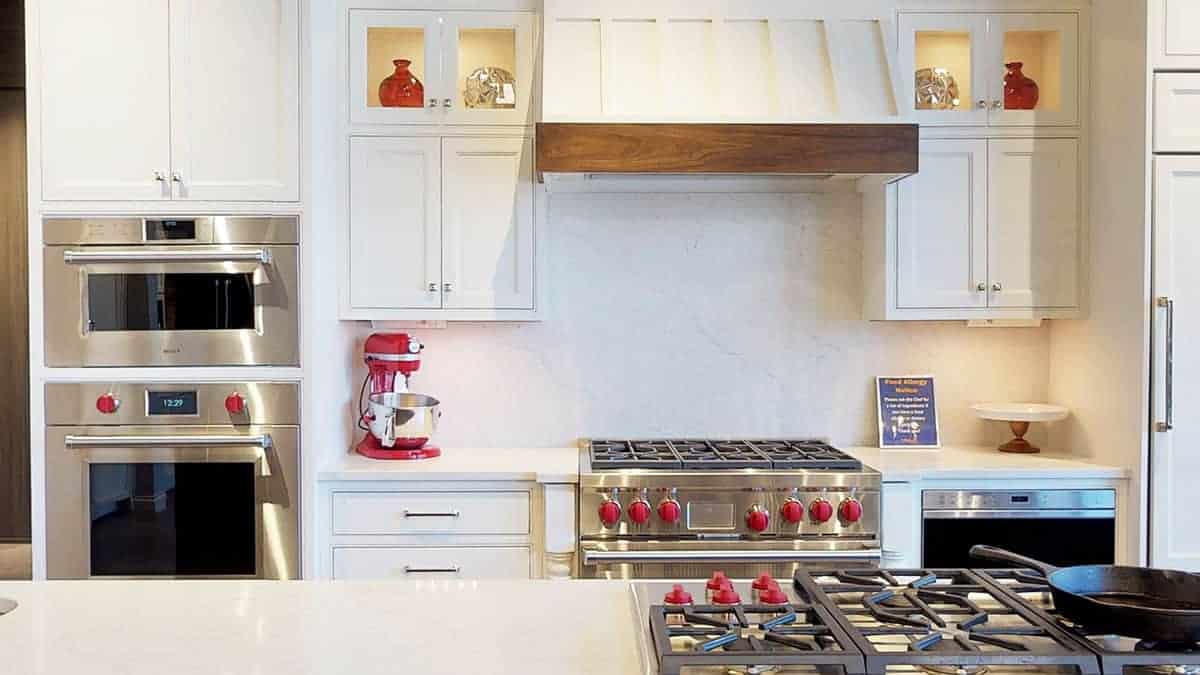You are reading a different article today about the mistakes and best practices of designing your kitchen.
It might be interesting to show you where kitchens fail so yours does not.
This article is not about style.
We all have a unique style based on our backgrounds and preferences.
That said, I will show you where kitchens fail and succeed by showing you the most popular kitchens currently on the internet.
Let’s get started.
Kitchen Appliance Design Mistakes and Best Practices
First, let's look at the most common mistake in kitchen design: inadequate ventilation.
We'll cover everything you need to know, including CFM, capture, and duct runs.
Looking for answers about Appliances?
Short on time? Download our free Appliance Buying Guide.
Mistake Number One: Inadequate Ventilation
If you walk into any restaurant, you see a massive vent system. Restaurants use their ovens and must vent properly to evacuate heat, smoke, and fumes from their kitchens.
Over the last 20 years, the burners on regular stoves had increased from 8,000 BTU (British Thermal Unit) when I started in 1986 to over 15,000 or more for the two front burners.
At the same time, new homes are more efficient, so more of the smoke, grease, and fumes like Carbon Monoxide, Carbon Dioxide, Formaldehyde, and Nitrous Oxide stay in your home.
Many vents, like over-the-range microwaves, do not cover those front burners.
Downdrafts can't work because they force the air down through a small opening.
Best Practices for Venting Your Kitchen Range
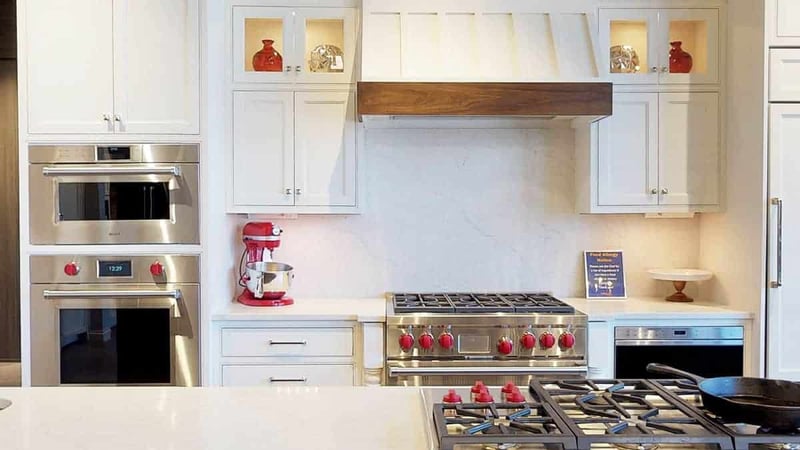 Wooden Custom Range Hood Above a Professional Gas Range at Yale Appliance
Wooden Custom Range Hood Above a Professional Gas Range at Yale Appliance
CFM
CFM (Cubic Feet Per Minute) is the speed of the motor. For example, 600 CFM is 600 cubes of air evacuated per minute.
In this case, more is better, especially if you cook, but the cost difference between blowers is not that much.
In Massachusetts, you must worry about make-up air and have a fresh air return of over 400 CFM.
We cover this in different articles. I will leave them below with a free downloadable ventilation buying guide.
Capture Area
The capture area is the size of the hood and the problem with most vents.
You want to cover the high-output burners in the front at roughly 22 inches deep, so an efficient hood is 24 inches in depth.
Unfortunately, most hoods are 21 inches or less.
 Professional Range Hood
Professional Range Hood
Your only options are to buy a range hood with 24 inches of depth or build your own custom range hood with a blower.
Duct Runs
Invariably someone will show me their vent plan with two or three transitions or "elbows."
Transitions reduce the air movement you are trying to remove from your home.
Either vent straight up or straight back.
In other words, place your vent on an outside wall so you have the option.
Next, let’s discuss my version of the kitchen triangle and the importance of centralizing your sink, stovetop, and dishwasher.
Looking for answers about Appliances?
Short on time? Download our free Appliance Buying Guide.
Mistake Number Two: Not Centralizing Your Sink, Stovetop, and Dishwasher
If you were to paint the bottoms of your shoes and walk into your kitchen, you would find the most paint around your sink, stovetop, and dishwasher.
So, you centralize them.
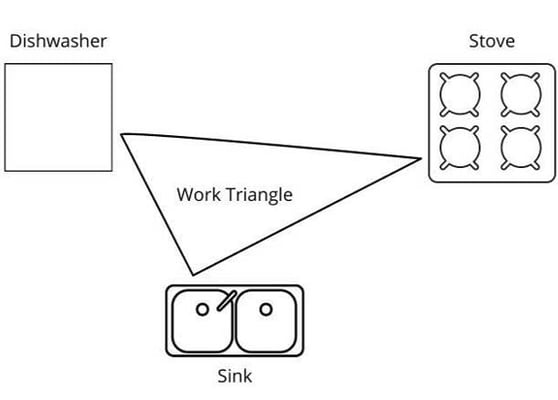
Steve’s Kitchen Triangle
The sink is the most popular item in your kitchen. Stirring soup and other stovetop cooking requires constant attention.
You do not need to centralize your refrigerator or wall ovens because they do not require your immediate attention.
In smaller kitchens, every appliance is centralized. In a medium to larger kitchen, you can add a set of refrigerator drawers or a speed oven.
Another Key Factor to Kitchen Design: Lighting
We no longer sell lighting after 95 years of doing so.
Most people will always ask about how many pendants there are on an island. However, task lighting is like your kitchen's recessed, track, and under-cabinet lighting.
Think of pendants as adding depth and personality to the design.

Popular Kitchen Designs: The Good, The Bad, and The Ugly
Now let's look at this kitchen.
Kitchen 1

It's easy for me to point out what is wrong. I wasn't there at the design or building meetings. This might be OK for a client who doesn’t cook that much.
Using a downdraft for a professional range will not work. The kitchen maximizes windows and views but at the expense of clean air.
They can drop an island hood over the cooktop. With tall ceilings, that hood is massive, or they can swap the stove and sink.
Kitchen 2
Look at the kitchen below:
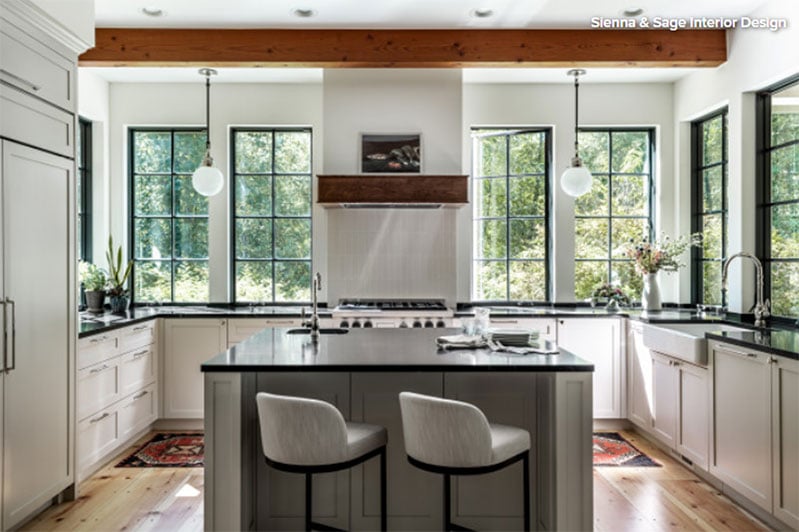
You still have a lot of window space but with a much better vent.
I would swap the main sink on the island, and the bar sinks on the right-hand side.
However, besides walking around the island, it is not a bad kitchen.
They may also want to consider an island light matching the other two in the middle.
Kitchen 3
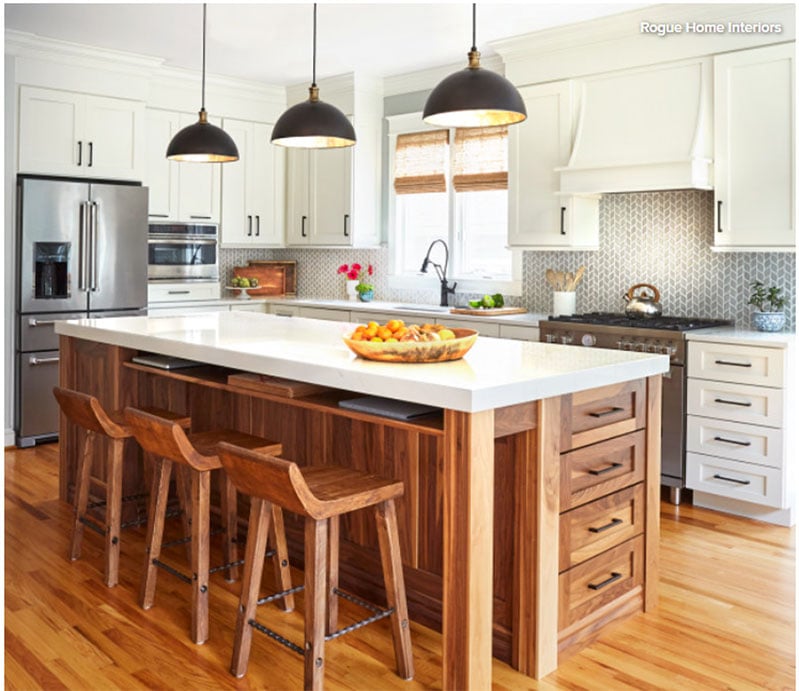
Look at the microwave.
It's on the other side of the kitchen because microwaves do not have to be centralized.
Of course, if you use a microwave more often, you can place them on an island.
The refrigerator is full depth yet doesn't protrude. The cabinets are deeper than the standard 24 inches.
Kitchen 4
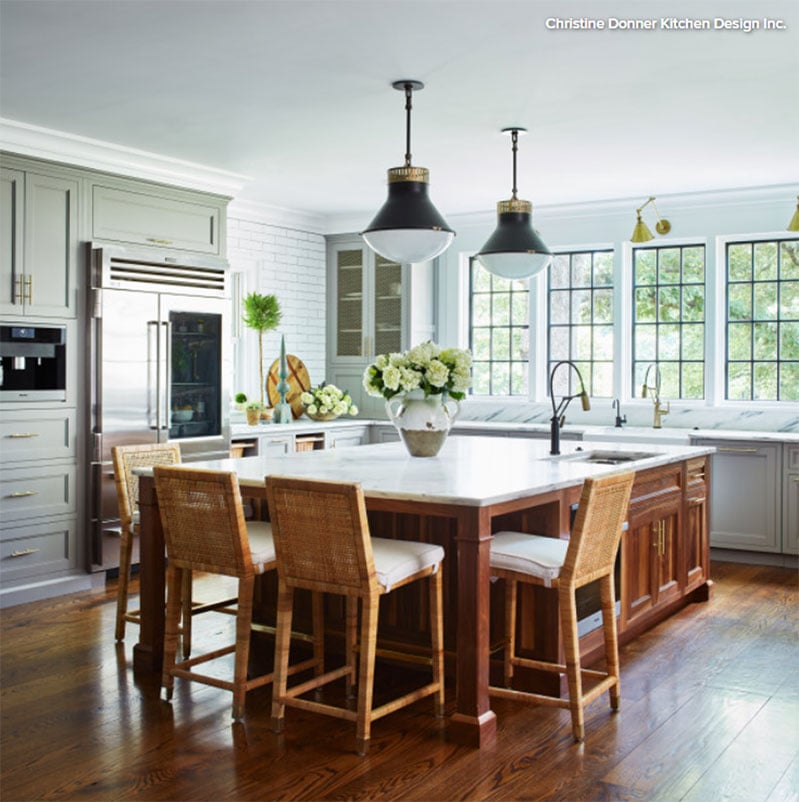
This kitchen does an excellent job of merging industrial and traditional elements.
You have a professional Sub-Zero refrigerator on one side and a traditional Lacanche range on the other.

You can blend different styles for a unique space.
Look at the placement of the sinks, they still have plenty of window space.
Kitchen 5
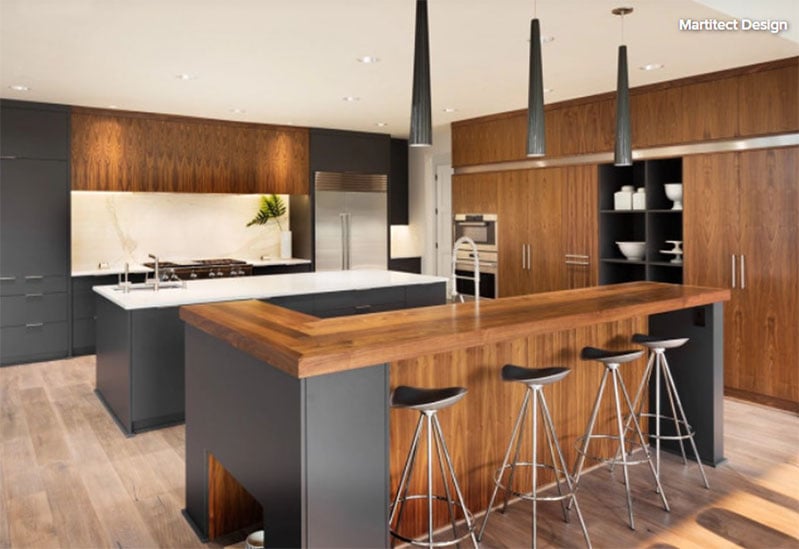
You don't see kitchens like this very often. It's a cook's kitchen. You have a preparation station and an entertainment station.
Kitchen 6
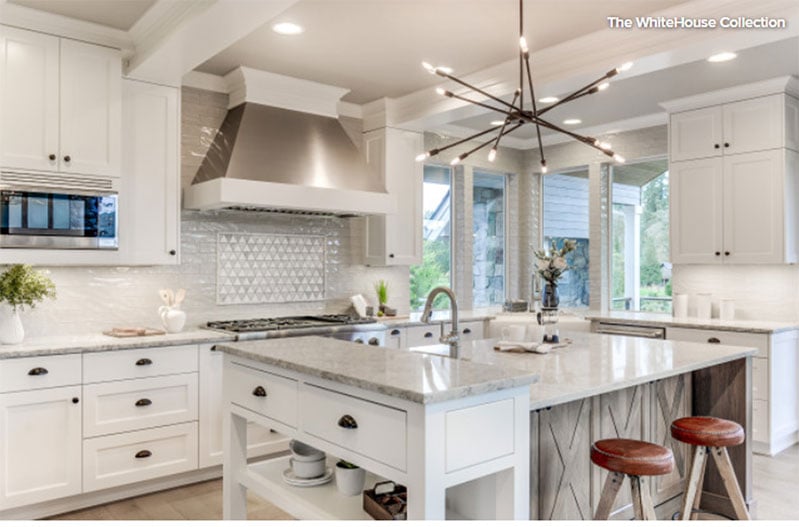
There are three 42-inch refrigerators as well around the perimeter.
This kitchen personalizes the stainless hood with an interesting design touch. The hood is the right depth as well.
I like the main sinks on the island, but the sink is not far away.
Looking for answers about Appliances?
Short on time? Download our free Appliance Buying Guide.
Kitchen 7
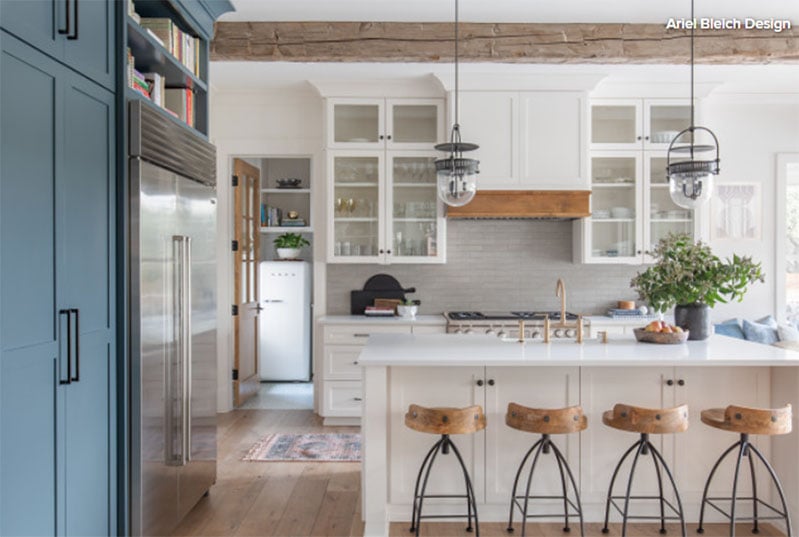
Another beautiful design. Look how many different elements from the distressed wood on the beam to the wood and matching stools near the island.
The Hubbardton Forge lights tie it all together.
You are looking at a Sub-Zero professional built-in refrigerator. They are counter-depth, and the door protrudes slightly.
Integrated refrigerators are seamless. You can make that whole cabinet wall look identical to two smaller integrated refrigerators.
Still, the kitchen is well done.
Kitchen 8
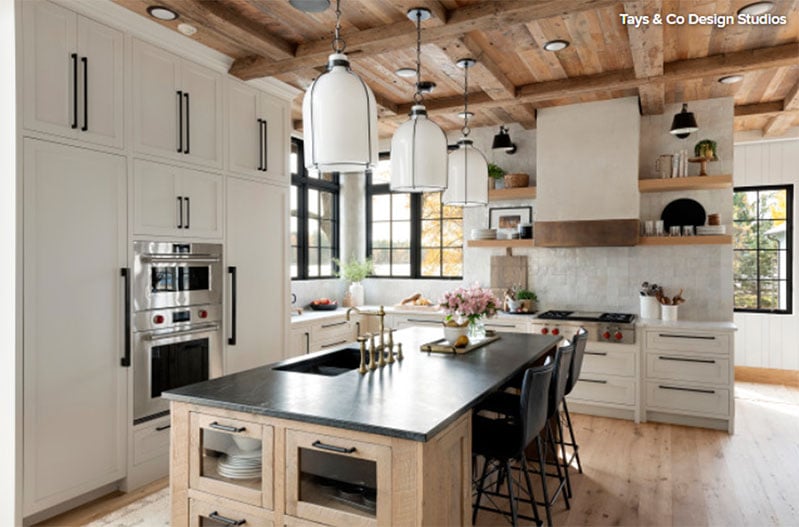
The ceiling, black handles, and matching black trims make this kitchen my favorite stylistically.
However, the sink is too far away from the cooktop. The homeowner will be walking back and forth way too much.
In a well-designed kitchen, you do not have to move more than a step or two between the sink and stovetop.
Kitchen 9
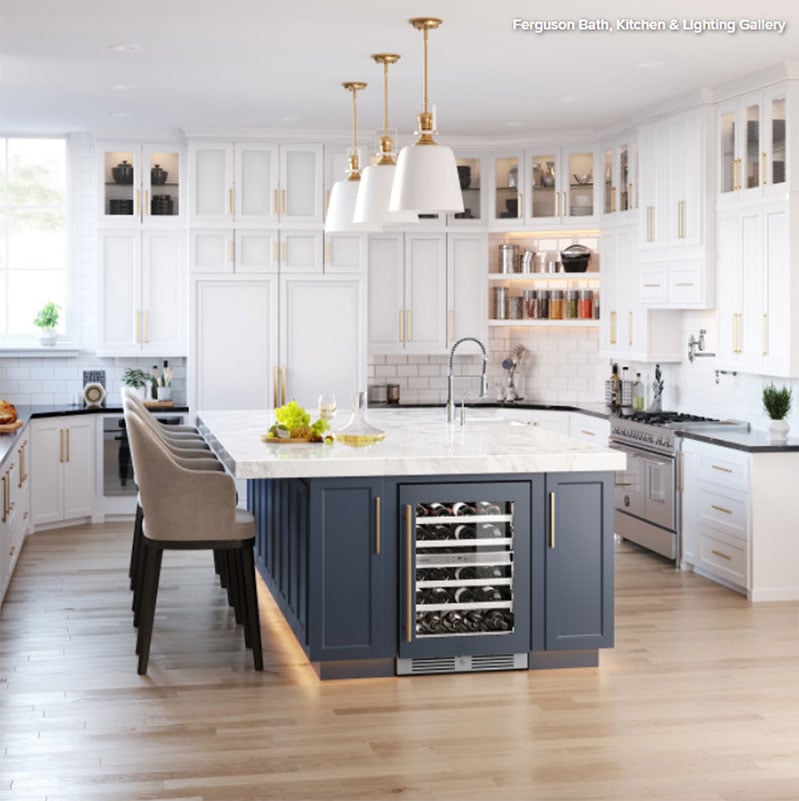
This kitchen mixes metals nicely. You can mix brass and stainless steel.
The sink and stove are next to each other.
You even have a pot filler faucet over the stove, so you don't have to lift and carry a lobster pot or a big pasta pot.
Refrigerators are on the perimeter, with extra wine storage in the middle.
Now the problem: The vent is too shallow. It doesn't cover the burners, so all the grease, smoke, and fumes will not be properly vented out of the house.
Key Takeaways
Your style is your own.
Hopefully, this article has helped you with a range of possibilities.
That said, focus on your venting and the placement of your sink, stovetop, and dishwasher for a functional kitchen you will enjoy.
Also, download and read these free resources:
The Ventilation Buying Guide: You will learn how to vent, the vents you should not buy, and make-up air laws your contractor should know.
The Book of Bad Renovations: Tragically beautiful, non-functional kitchens plus suggestions for improvement.
Additional Resources
Want more information on the worst renovation mistakes to avoid? Get The Book of Bad Renovations to learn how to avoid a renovation failure. Well over 1 million people have read and trusted a Yale Guide.
Related Articles


